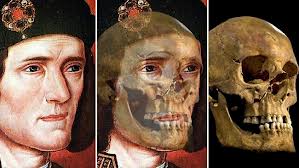Wikipedia describes King Richard III as the King of England from 1483 until his death in 1485 in the Battle of Bosworth Field.
The Battle of Bosworth Field was the decisive battle mounted by the army of Henry Tudor who challenged the rule of King Richard III, thus, ending the decades-long conflict known as the Wars of the Roses, with the throne as its most coveted possession. Tudor later became King Henry VII.
Richard III belonged to the Plantagenet dynasty. The Plantagenets were a royal dynasty whose strong-tempered rulers conquered Wales, battled France, and helped transform England into a thriving medieval kingdom. The last of the dynasty, Richard III was also the last English monarch to die in battle. His body was never recovered, though he was given a peremptory burial just the same.
Not only has Richard III been defeated during the time that he wore the crown, but even the great William Shakespeare humiliated and reviled him when he immortalized the king in his play as a hunchbacked usurper who left a trail of bodies – including those of his two princely nephews, murdered in the Tower of London – on his way to the throne.
Perhaps, all that negative perception of King Richard III will change now with the discovery of his 500-year-old remains under a car park in the city of Leicester.
For centuries, the location of Richard’s body has been unknown. Records say he was buried by the Franciscan monks of Grey Friars at their church in Leicester. The church was closed and dismantled after King Henry VIII dissolved the monasteries in 1538, and its location eventually was forgotten.
Then, last September 2012, archaeologists searching for Richard dug up the skeleton of an adult male who appeared to have died in battle.
Bone specialist Jo Appleby said study of the bones provided “a highly convincing case for identification of Richard III”.
Appleby said the 10 injuries to the body were inflicted by weapons like swords, daggers and halberds and were consistent with accounts of Richard being struck down in battle – his helmet knocked from his head – before his body was stripped naked and flung over the back of a horse in disgrace.
She said some scars, including a knife wound to the buttock, bore the hallmarks of “humiliation injuries” inflicted after death.
The remains also displayed signs of scoliosis, which is a form of spinal curvature, consistent with contemporary accounts of Richard’s appearance, though not with Shakespeare’s description of him as a “deform’d, unfinished” hunchback.
Researchers conducted a battery of scientific tests, including radiocarbon dating to determine the skeleton’s age. They found the skeleton belonged to a man aged between his late 20s and late 30s who died between 1455 and 1540. Richard was 32 when he died in 1485.
But, what is amazing is that the DNA from the skeleton matched a sample taken from a distant living relative of Richard’s sister.
Geneticist Turi King said Michael Ibsen, a Canadian carpenter living in London, shares with the skeleton a rare strain of mitochondrial DNA.
This, according to King, combined with the archaeological evidence, leaves little doubt that the skeleton belonged to Richard.
